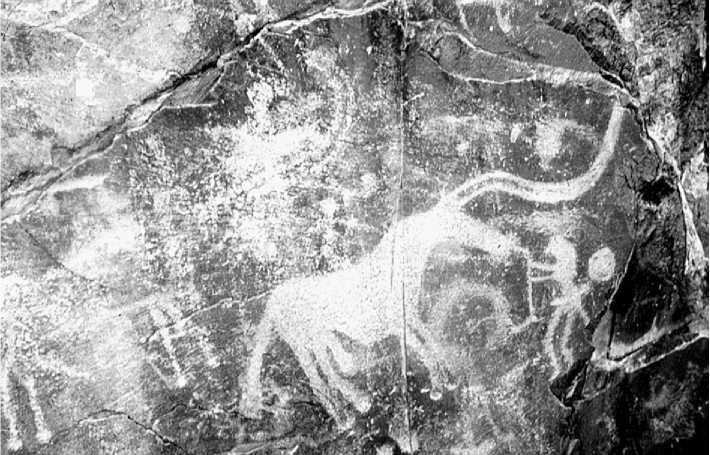S. I. Rudenko’s seminal excavations in 1929 of huge frozen, but robbed, kurgans at Pazyryk in the Gorny Altai, Russia, revealed that these nomads followed a rich nomadic lifestyle. Finely carved wooden horse accouterments, multicolored horse blankets fashioned from felt, elaborated Animal Style motifs, and a wall hanging with a repeat motif depicting a woman of high status, probably a priestess, confronted by an male rider, all speak of a complex ritual life. Sacrificial horses masked and wearing horns imply cultural ties with Tamgaly in southern Kazakstan. From another Pazyryk kurgan a trade piece, a woolen carpet with a design that parallels the carved images of Medes bringing horses as tribute to the Great King at Persepo-lis (Iran), discloses the Pazyryks’ contact with the Achaemenid Persians. On the Ukok Plateau, Natalie Polosmak excavated a frozen burial containing a

Figure 13 A ceremonially horned horse with shaman, Tamgaly petroglyphs, Kazakstan.
Priestess wearing the nomadic high-pointed hat, caftan, and skirt. From another kurgan at Berel, located in the northeastern Kazakstan Altai Mountains, examination of the frozen remains of a high-ranking man and woman revealed the presence of hookworm infestation that could only have occurred on the shores of the Aral or Caspian Sea or in Iran, some 750 miles (1200 km) from the burial site. This confirms the practice of long-distance nomadizing during the Early Iron Age.




 World History
World History









